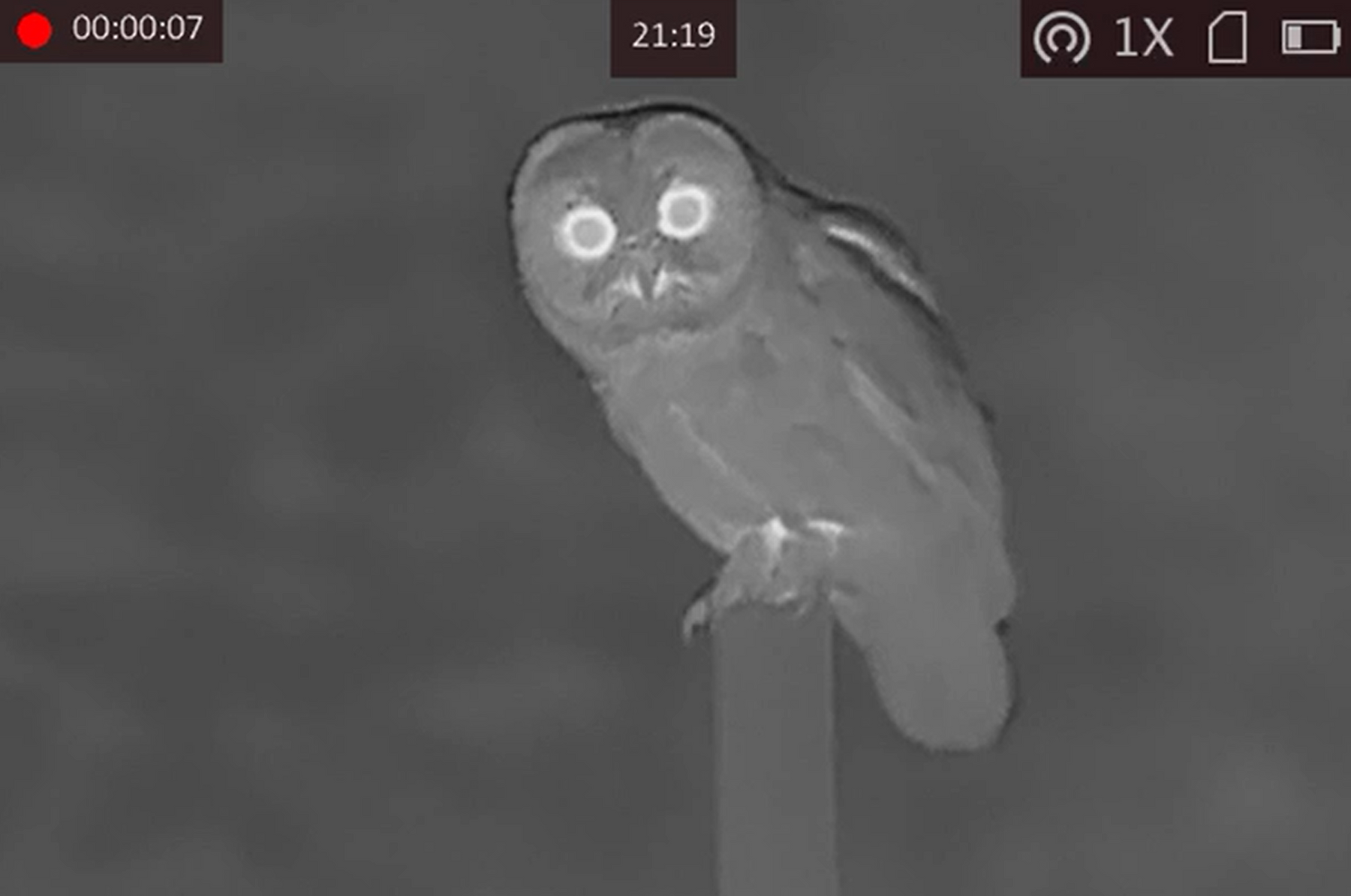
Night Vision and Thermal Imaging for Bird & Wildlife Watching: Pros and Cons
Bird watching and wildlife observation are typically associated with daylight hours, but there's a whole world of fascinating creatures that come alive after dark. To explore this nocturnal realm, enthusiasts have turned to advanced modern technologies such as night vision and thermal imaging to see through the shadows.
In this post, we will delve into the advantages and disadvantages of using Nightvision and Thermal for wildlife observation.
Advantages of Night Vision Devices:
-
Enhanced Visibility: Night vision devices amplify existing light, allowing you to see in low-light conditions. This technology can reveal details that would otherwise be invisible to the naked eye, enabling you to observe nocturnal bird species, such as owls and nightjars, as well as other elusive creatures that emerge after sunset.
-
Increased Safety: Exploring wildlife habitats after dark can pose risks due to limited visibility. Night vision devices enhance your safety by providing a clearer view of potential hazards, such as uneven terrain or hidden obstacles.
-
Unique Observations: Nocturnal wildlife exhibits distinct behaviours and interactions that differ from their daytime counterparts. Night vision devices enable you to witness these unique behaviours, such as courtship displays, hunting techniques, and foraging strategies, offering a deeper understanding of nocturnal species' ecology.
Advantages of Thermal Imaging Devices:
-
Detection in Darkness: Unlike night vision, thermal imaging devices do not rely on ambient light but instead detect the heat emitted by objects. This technology allows you to detect wildlife, including birds, even in complete darkness. You can spot animals hidden in foliage or observe them from a distance without disturbing their natural behaviours.
-
Tracking and Surveying: Thermal imaging devices excel at tracking animals by their heat signatures. This capability is particularly useful for studying bird migration patterns, population surveys, or monitoring rare and endangered species. Thermal imaging also aids in locating nests or roosting sites, enabling researchers to gather valuable data without disturbing the birds.
Disadvantages of Night Vision Devices:
-
Limited Range: Night vision devices typically have a limited range, which can vary depending on the model and ambient lighting conditions. Their effectiveness diminishes with distance, reducing the clarity of observed subjects. This limitation may hinder detailed observations of birds or wildlife that are farther away.
-
Monochromatic Imaging: Most night vision devices provide monochromatic or green-hued images. While this can enhance contrast in low-light environments, it may not accurately represent the vibrant colour of birds or their surroundings. Some enthusiasts find this lack of colour rendition less visually appealing.
Disadvantages of Thermal Imaging Devices:
-
High Cost: Thermal imaging devices tend to be more expensive compared to night vision or standard binoculars. The advanced technology and specialised components involved contribute to their higher price range, making them less accessible to casual bird watchers or wildlife enthusiasts on a budget.
-
Limited Detail: While thermal imaging devices excel at detecting heat signatures, they may provide limited detail or resolution, especially when it comes to smaller birds or distant observations. Fine features, plumage patterns, or subtle behaviours may be challenging to discern solely through thermal imaging.
In conclusion, Night vision and thermal imaging devices offer unique opportunities to explore the darkness and wildlife which hides within it. They enhance visibility, improve safety, and provide invaluable insights into the behaviours and ecology of nocturnal species.
However, they also come with limitations such as reduced range, monochromatic imaging, higher costs, and limited detail. As with any technological tool, it's important to weigh the advantages and disadvantages before incorporating them into your bird watching or wildlife observation endeavors. Ultimately, the choice between night vision and thermal imaging devices depends on your specific goals, budget, and preferences.
